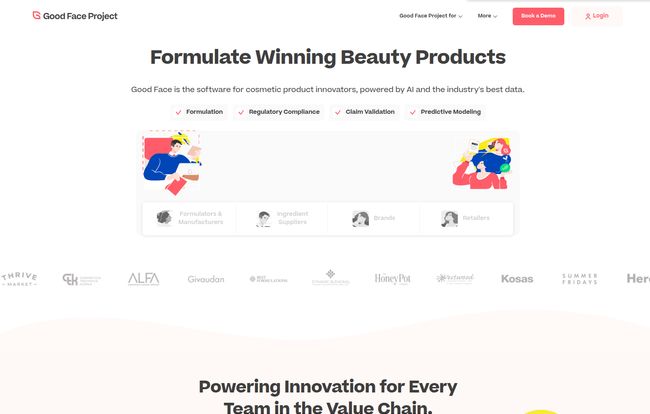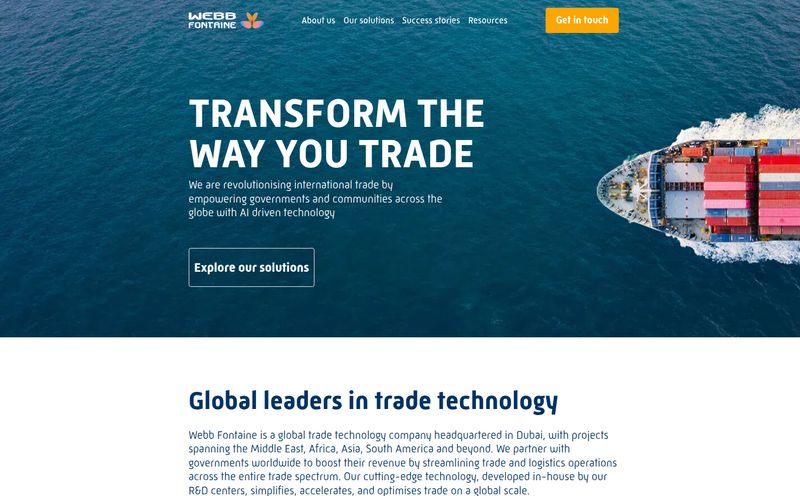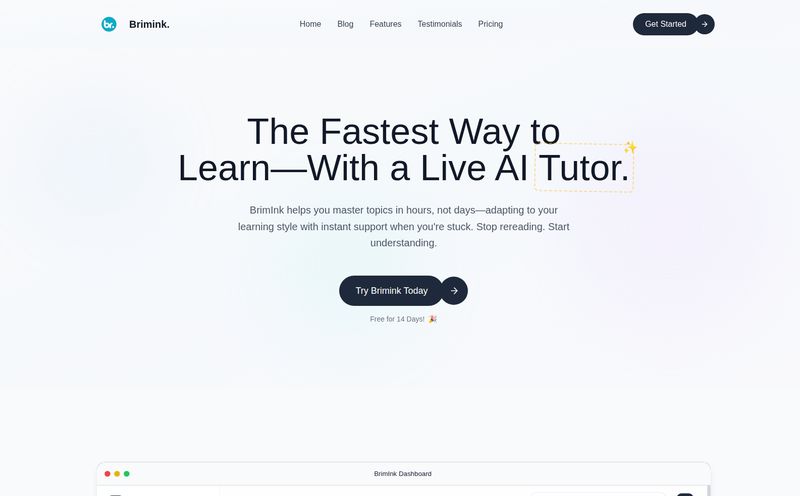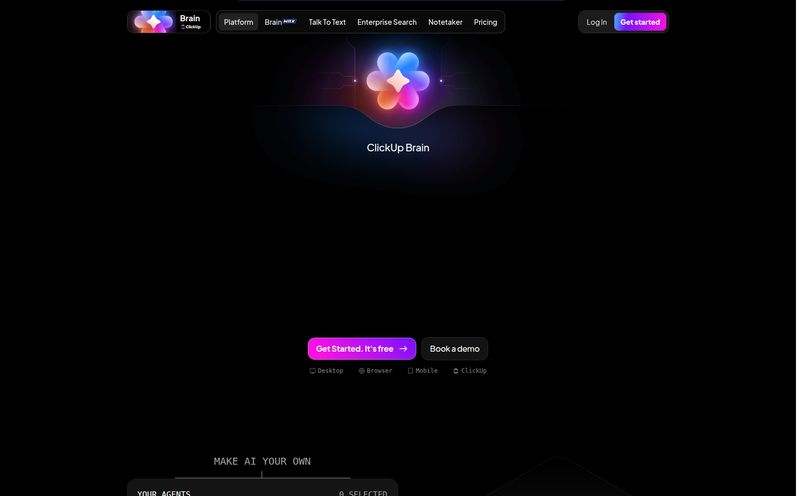I’ve been in the digital marketing and SEO game for a long time. I’ve seen trends come and go, from the rise of influencer marketing to the absolute chaos of the latest Google algorithm update. But one of the most fascinating shifts I've witnessed has been in the beauty industry. It's gone from a world of secret formulas and marketing mystique to a consumer-driven demand for radical transparency.
Remember when you could just slap “dermatologist-tested” on a bottle and call it a day? Those days are long gone. Now, customers are practically chemists themselves, scanning INCI lists with apps, debating the merits of phenoxyethanol in online forums, and demanding to know the sustainability score of their mica supplier. For brands, it's a minefield. A glorious, consumer-empowering minefield, but a minefield nonetheless.
That's the backdrop for why a platform like The Good Face Project caught my eye. It’s not another consumer-facing app. It’s a B2B, AI-powered beast aimed at fixing the very problems that keep cosmetic product developers up at night. So, let’s get into it.
What on Earth is The Good Face Project Anyway?
At its core, The Good Face Project is a cloud-based software designed for the people behind the beauty counter: the formulators, the product development teams at brands, the ingredient suppliers, and even the buyers at major retailers. Think of it less as a simple tool and more as a central nervous system for creating a beauty product.
It combines a massive, and I mean massive, database of over 175,000 cosmetic ingredients with artificial intelligence to help with everything from initial formulation to making sure you don't get a scary letter from a regulatory body. It grades ingredients across multiple dimensions like safety, sustainability, and efficacy. It’s trying to bring objective data to an industry that has often run on subjective claims and “magic” ingredients.
Basically, it’s designed to answer the tough questions before you’ve even spent a dime on pilot batches. Can we make this moisturizer without silicones and still have it feel amazing? Is this preservative compliant in the EU, Canada, and Japan? Can we legitimately claim this serum is “brightening”? That's the promise.

Visit The Good Face Project
The Core Features That Actually Move the Needle
A platform can have all the bells and whistles, but what actually saves time and money? From my analysis, the power of The Good Face Project comes from a few interconnected features.
AI Formulation and a Library of Alexandria for Ingredients
Imagine being a formulator trying to create something new. Your process is probably part-science, part-art, and a whole lot of trial and error. What GFP does is give you a ridiculously powerful assistant. Their database of 175,000+ ingredients, all analyzed against over 21,000 scientific sources, is the foundation. You can screen ingredients against performance targets, cost, and, crucially, regulatory blacklists from around the world. The AI can then help you tweak formulas, suggest alternatives, and predict how a final formulation might perform. It’s like having a brilliant chemist, a regulatory lawyer, and a data scientist whispering over your shoulder.
Finally, a GPS for the Regulatory Jungle
I once had a client, a small indie beauty brand, that had to pull a bestseller from the European market because a single ingredient fell afoul of a new EU directive. It was a costly, soul-crushing experience. This is where a tool like GFP becomes less of a luxury and more of an insurance policy. They claim to track over 100 standards and regulations in real time. This means as you formulate, the system is automatically flagging ingredients that are banned or restricted by Sephora's Clean standards, the EU, Credo Beauty, or California's Prop 65. That ability to de-risk a product launch from day one is HUGE.
Claim Validation and Seeing the Future with Predictive Modeling
This is the part that gets a marketing guy like me excited. “Clean,” “Sustainable,” “Vegan,” “Hydrating.” These are more than buzzwords; they’re claims that need to be substantiated. The platform helps brands build a product that meets the technical requirements for these claims and provides the documentation to back them up. The predictive modeling is the cherry on top. By analyzing the formulation, the system can give you a heads-up on potential performance, helping to shorten the R&D cycle. It won't replace final testing, of course, but it can get you to a better final product, faster.
The Partner Portal That Connects the Dots
Product development is often siloed. R&D has their formulas, marketing has their concepts, and the raw material suppliers are a whole other conversation. The Partner Portal aims to unify this. It allows ingredient suppliers to securely share their proprietary data with brands, and for brands to work more efficiently with manufacturers, all while protecting intellectual property. It creates a single source of truth, which can prevent a lot of the miscommunication that leads to delays and costly mistakes.
So, Who Is This Really For?
The platform seems built to serve the entire value chain, but the benefit is a little different for each player:
- Formulators & Manufacturers: They get a massive efficiency boost. Less time researching, more time creating. They can innovate faster and with less regulatory risk.
- Brands: Speed to market is the big win here. They can go from concept to compliant, validated product much faster. Plus, the transparency and claim-substantiation capabilities are pure gold for their marketing and building consumer trust. The testimonial from Youth to the People's Co-Founder on their site speaks volumes here.
- Ingredient Suppliers: This gives them a direct channel to showcase their ingredients' efficacy and safety data to the brands and formulators who need it most.
- Retailers: For retailers with their own clean or sustainable beauty standards (like Sephora or Credo), it helps them ensure the products they put on their shelves actually comply with their own rules.
The Good, The Bad, and The Realistic
No tool is perfect, and as an analyst, I’m paid to be skeptical. So here’s my take.
On the upside, the potential for increased efficiency is undeniable. Shaving months off a product development timeline translates directly to revenue. The risk mitigation on the regulatory side is, in my opinion, its most valuable feature. And having all this on a cloud-based platform accessible to a distributed R&D team is just how modern companies need to work.
However, let’s be real. There are some practical considerations. You're putting a lot of faith in their proprietary AI and their data interpretation. While their database is huge, you are essentially operating within their ecosystem. There's also going to be a learning curve. This isn’t something your intern can master in an afternoon; it’s a professional-grade system that will require some user training to fully exploit. But honestly, any powerful software requires that.
Let's Talk Money: What Does The Good Face Project Cost?
Ah, the million-dollar question. Or, hopefully, less. If you look at their website, you won’t find a pricing page with neat little tiers. You’ll see a “Book a Demo” button. This is classic B2B SaaS for an enterprise-level product. It means the pricing is almost certainly customized based on your company’s size, the number of users, which features you need, and your overall usage. Don't expect a simple $99/month plan. This is a serious investment for businesses that are serious about their product development. My advice? If you're intrigued, the demo is the only real way to find out if the cost aligns with the value for your specific business.
Final Thoughts from an SEO Geek
So, is The Good Face Project a game-changer? For the right company, I think it absolutely could be. In an age where consumer trust is the ultimate currency, being able to build products on a foundation of verifiable data is a massive competitive advantage. It’s a tool that seems purpose-built for the modern beauty landscape, where transparency isn't just nice to have—it's everything.
It won't magically make you a better formulator, and it won’t write your marketing copy for you. But it can handle the crushing weight of data analysis and regulatory cross-checking, freeing up your brilliant human experts to do what they do best: innovate and create products people love.
Frequently Asked Questions
- 1. What is The Good Face Project in simple terms?
- It's an AI-powered software platform for the beauty industry that helps companies formulate products, ensure they meet global regulations, and validate their marketing claims. It's a professional tool for brands, labs, and suppliers.
- 2. Who uses The Good Face Project?
- It's designed for cosmetic formulators, R&D teams, innovative beauty brands, ingredient suppliers, and even large retailers who want to manage their internal product standards.
- 3. How does the AI for formulation actually work?
- The AI leverages a huge database of over 175,000 ingredients. It helps formulators by suggesting ingredient alternatives, predicting formulation performance, and flagging any ingredients that don't meet specific safety, cost, or regulatory profiles in real-time.
- 4. Is this only for creating "clean beauty" products?
- Not exclusively. While it's incredibly powerful for brands focused on the "clean" space, its regulatory and formulation tools are valuable for any cosmetic company, regardless of their marketing ethos. Its core function is about data-driven, compliant product development.
- 5. How much does The Good Face Project cost?
- There is no public pricing. It's an enterprise software solution, so pricing is customized based on a company's needs. You have to contact their team and book a demo to get a quote.
Reference and Sources
- The official platform website: The Good Face Project
- An overview of cosmetic regulations in the EU: European Commission - Cosmetics Legislation



